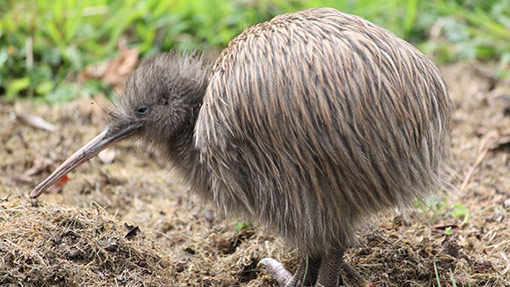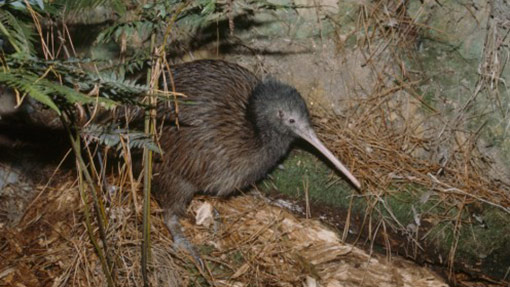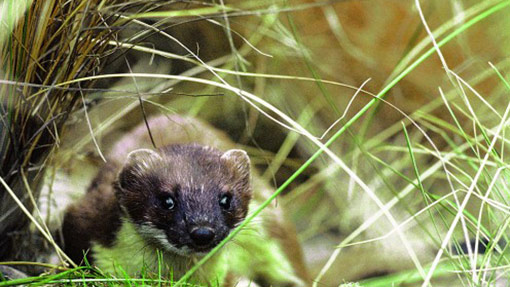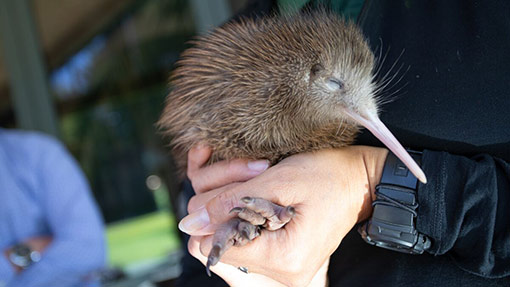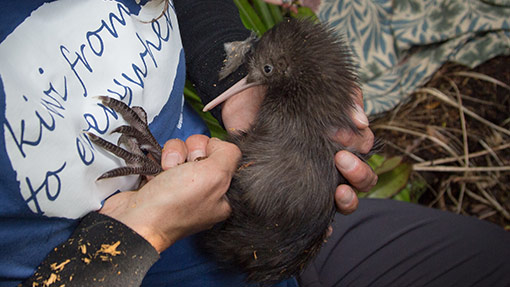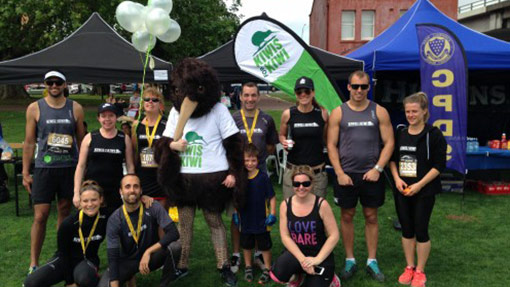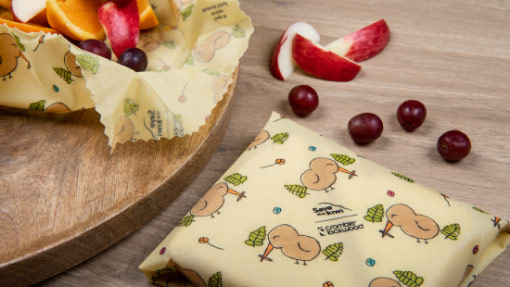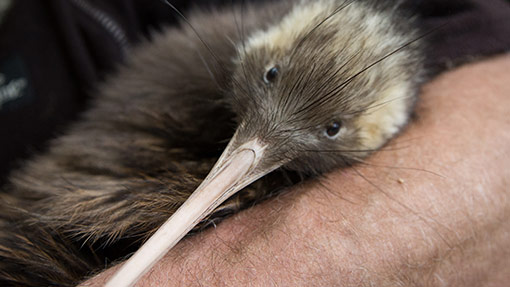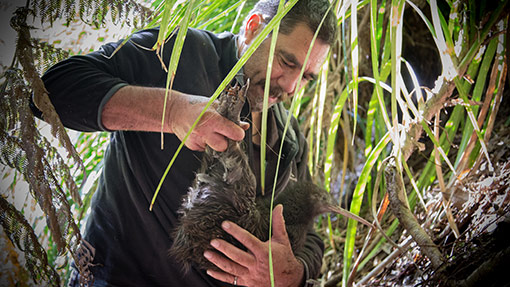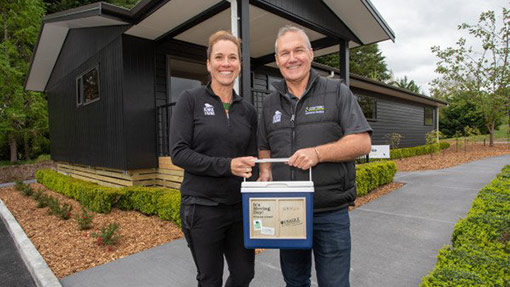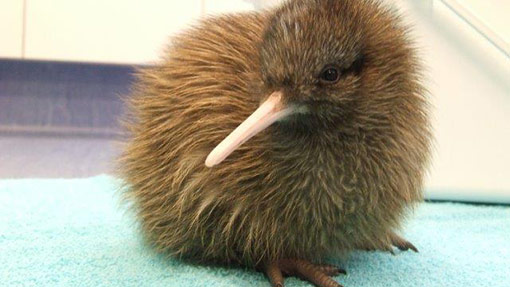More than two years after a stoat incursion put a halt to kiwi being released onto Auckland’s Motutapu Island, this week approximately 25 juvenile kiwi will be released onto the motu, heralding the re-launch of Save the Kiwi’s “To the motu and back” Kōhanga Kiwi programme for Coromandel brown kiwi on the island.
This week, a catching team of 2 conservation dogs and 8 musterers is heading to Rotoroa Island, also in the Hauraki Gulf, to round up 20-25 kiwi that have been using Rotoroa as a temporary home. Once they’ve been comfortably packed into kiwi travelling boxes, the birds will be taken by boat to Motutapu Island where they’ll join 108 other Coromandel brown kiwi that have been released onto the motu over the last 10 years.
Save the Kiwi executive director Michelle Impey says this week’s muster and subsequent release is a significant milestone for everyone involved in resolving the stoat incursion.
“Since 2012, Save the Kiwi and co-landowners Ngāi tai ki Tāmaki and the Department of Conservation have been working in partnership to rebuild the Coromandel brown kiwi population by using Motutapu as a safe space for kiwi chicks to thrive and have offspring of their own,” says Ms Impey. “The news in late 2020 that a stoat could impact the gains we’ve collectively made was devastating. This week, everyone’s hard mahi will be rewarded when kiwi are finally released onto the motu again. It’s been a long two years. It’s incredibly exciting.”
In September 2020, Motutapu Island experienced a stoat incursion. It was thought to be resolved in November when a stoat was caught in a trap. However, in December it was determined that three critically endangered tūturuatu/shore plovers had been killed by a stoat, indicating that at least one more stoat had made it to the island, likely by swimming.
A rāhui was placed on the island, giving Save the Kiwi, Ngāi tai ki Tāmaki, and Department of Conservation time and space to resolve the incursion and implement more predator control measures.
Ngāi tai ki Tāmaki chair Billy Brown says the rāhui was used to protect native taonga species from the threat that stoats pose to vulnerable wildlife.
“The rāhui gave our team on the ground the chance to focus on the intense mahi needed to reinstate the pest-free status of the island,” Mr Brown says. “Motutapu is an important space for conservation gains to be made, but we needed to be certain that the island could support the goals we and other groups had around these and other taonga.
“This week, kiwi returning to Motutapu confirms that the motu is once again safe for taonga species. Together with DOC and Save the Kiwi, Ngāi tai ki Tāmaki and our team of volunteers are committed to doing what we can to protect these birds and other species. Ngāi tai ki Tāmaki would like to acknowledge the great work Save the Kiwi have led and the many people committed to seeing these beautiful manu thrive.”
Kōhanga Kiwi is a world-leading kiwi repopulation strategy driven by Save the Kiwi that enables significantly faster growth of kiwi than the species would be able to achieve if they were left to their own devices in the wild. Kiwi eggs are collected from the wild and incubated at facilities like Auckland Zoo, the Crombie Lockwood Kiwi Burrow in Taupō, and the National Kiwi Hatchery in Rotorua. Chicks are released into a kōhanga, usually an offshore island or a sanctuary surrounded by a predator-proof fence, when they are approximately one month old.
Motutapu Island has been the kōhanga site for Coromandel brown kiwi since 2012. In that time, 108 kiwi have been released onto the motu to form a founder population of kiwi. Eventually, progeny birds of the founder kiwi population will be returned to the places where birds were originally gifted from, to bolster existing kiwi populations or create new ones.
In the two years since the rāhui was placed on Motutapu, neighbouring Rotoroa Island has become a temporary creche for kiwi originally intended for Motutapu. Kiwi chicks have been released onto the island at about four weeks of age, then retrieved when they reach approximately 1.2kg in weight and returned to the Coromandel peninsula. This week’s relocation will see the birds head to Motutapu where they’ll become part of the kōhanga’s founder population, heralding the continuation of Kōhanga Kiwi and “To the motu and back” on the island.
A pest-free island owned by the Salvation Army and run by the Rotoroa Island Trust, Rotoroa is a key site for conservation efforts in restoring the Coromandel brown kiwi population. The Rotoroa Island Trust and its team of volunteers have been instrumental in ensuring the island remains a haven for kiwi chicks and other vulnerable species.
“We are proud of our partnership with Save the Kiwi and the many kiwi projects on the Coromandel,” says Rotoroa Island Trust operations Manager Jo Ritchie. “We are very pleased that we can once again contribute to the expansion of the kiwi programme on Motutapu Island.”
Impey says without the support of the Rotoroa Island Trust and other organisations including Pūkaha Mt Bruce and the Crombie Lockwood Kiwi Burrow, the Coromandel brown kiwi kōhanga programme would have been completely halted.
“The success of kiwi conservation comes down to how well people work together,” she says. “We are so grateful for the Rotoroa Island Trust stepping in to assist while Motutapu was out of action. We have been heartened by everyone’s willingness to help. The kiwi has a way of bringing all New Zealanders together, and it’s a privilege to be a part of that story.”
Over on Motutapu Island, predator control measures are being improved, to mitigate the risk of future incursions. But Department of Conservation Operations Manager Emma Kearney says there will always be the risk of an incursion on a predator-free island so we all need to work together to be prepared.
“Some predators like stoats can swim remarkably long distances,” says Ms Kearney. “Other predators, like rats, can stow away on boats. Now that Motutapu is welcoming new kiwi once again, it’s a timely reminder for boaties to remain vigilant by carrying out thorough biosecurity checks of their boats and gear every time they get out on the water.
“Remember too that dogs are not permitted on most Hauraki Gulf islands. Yet every year DOC rangers encounter dogs coming ashore onto the islands, where they pose a threat to the species recovery work of these pest-free islands.
“We must all work together to protect our taonga species like the kiwi.”
Save the Kiwi Coromandel brown kiwi regional coordinator Paula Williams says the development and success of the kōhanga programme on Motutapu is thanks to the many hidden, unsung heroes in the Hauraki-Coromandel region.
“Across the peninsula, many conservation projects involving iwi and community have worked for decades to create safe spaces for kiwi,” says Ms Williams. “It’s because of this care and passion that Save the Kiwi has been able to strategise population growth for Coromandel brown kiwi. Thanks to the hard, sustained graft of these groups, the future of Coromandel kiwi is looking bright on the peninsula. We are all getting ready for kiwi to return from Motutapu once the island population is growing and returns to the mainland can begin.”
